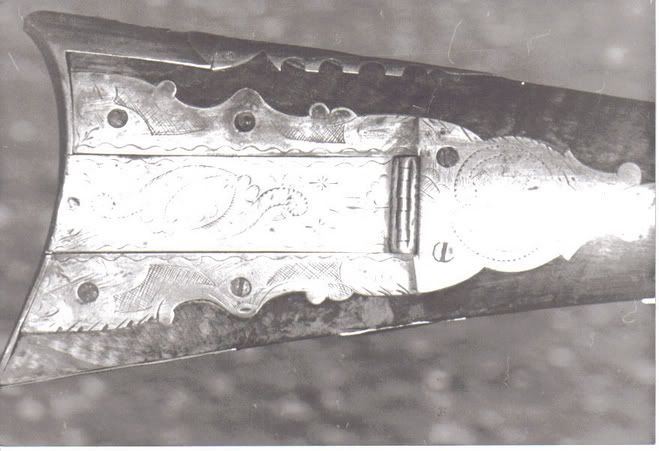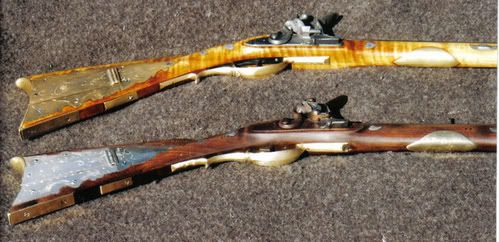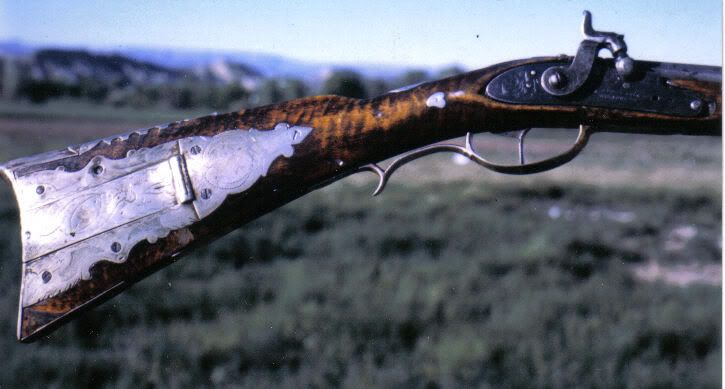"While we were at this place [York, Canada], the son of an Indian chief, whose tribe was in the vicinity of the town, died; and as the Indians were engaged in the services of the government, a party of soldiers, with drums and fifes, was sent to bury him with military honours. Curiosity induced me to accompany the party. After walking a considerable distance, the greater part through a thick wood, not without some secret misgivings on my part at the idea of joining a party of Indians in the centre of a forest, late in the day and far from home, we arrived at a small opening, where we found the Indians, with the body, waiting for us. The deceased was a young man, who had been a great warrior according to the ideas these people entertain of great achievements in war, which was evident from a number of scalps, suspended by a cord in regular order from the top of a long staff that was carried with great solemnity just before the corpse, as a trophy of deeds. They had been cut off by his own hand at the battle of Queenston, where he had distinguished himself. His death was occasioned by a cold which he took one night in the woods, where, after hunting all day, he lay down on the snow, with only a blanket wrapped round him, outside of his ordinary clothes. The body was in a decent black coffin; at our approach it was lifted upon sticks by four men, and the procession began to move. An immense number of Indians preceded the coffin; the last of whom, walking alone, carried the staff with the scalps; a few more succeed it, carrying the deceased's gun, bow and arrows, with a knapsack made of skin of some wild animal; and the soldiers brought up the rear, the drums and fifes playing a dead march. When we had proceeded about a quarter of a mile farther into the wood, we reached the grave, which was at the foot of a large beech tree; the coffin being deposited in it, the knapsack, gun, bow and arrows laced upon the coffin, and the staff with the scalps placed upright at the head, the soldiers fired a volley over it. The report of the muskets had scarcely subsided, when the whole tribe raised a most appalling yell, which, for force and wildness of sound, surpassed anything I could have conceived the human voice capable of; and such as I should consdier well calculated, as General Wolfe observed, 'to strike many a bold heart with affright.' Its terrifying echo through the forest, the solitary gloom of the place, and the near approach of the evening, gave additional horrors to the cry; and from not expecting it, the effect it had upon me, being but a young boy, I could not pretend to describe. I should be inclined to suppose it was something similar to the effects of a shock of electricity, for I scarcely knew whether I was standing on my feet or my head. The soldiers fired two rounds more, and the yell was repeated after each; this being concluded, the Indians proceeded to fill the grave, leaving the knapsack, &c. in it; and the staff, with the scalps swinging about in the breeze, was left at the head, to supply the place of a more permanent and civilized memento of its contents. I was informed that a porringer, containing food, was put inside the coffin; and upon enquiring into the motive for burying the deceased's knapsack, &c. I learned that the Indians suppose, with respect to futurity, that after death the departed take a long journey to a distant country, when they arrive at a very broad and rapid river which they must cross; and for this purpose a round log is placed over it. Those who have conducted themselves with propriety in this life, walk safely over the log when they enter into a most delightful country, abounding with game of every description; here they spend their eternity in shooting, hunting, fishing, &c.; and those who have lived improperly here, while crossing the river, fall in and are hurried into eternal oblivion. The food put in the coffin was to sustain the deceased on his journey, and the gun and bow and arrows for shooting in the happy country."
-
Friends, our 2nd Amendment rights are always under attack and the NRA has been a constant for decades in helping fight that fight.
We have partnered with the NRA to offer you a discount on membership and Muzzleloading Forum gets a small percentage too of each membership, so you are supporting both the NRA and us.
Use this link to sign up please; https://membership.nra.org/recruiters/join/XR045103
You are using an out of date browser. It may not display this or other websites correctly.
You should upgrade or use an alternative browser.
You should upgrade or use an alternative browser.
Indian burial (circa 1813)
- Thread starter Gary
- Start date

Help Support Muzzleloading Forum:
This site may earn a commission from merchant affiliate
links, including eBay, Amazon, and others.
Good reading Gary. Where did you find it?
Thanks.
I wonder if this is what happened to some of the longrifles traded to Indians, perhaps especially the high-quality ones which would be prestige items put in burials. Perhaps we'd have a clearer picture of how important the Indian trade was in the longrifle story if they hadn't buried them in this way! This account gives substance to something I've wondered about for a long time, but never researched. Fascinating!
As a matter of fact,there were some rifles found in graves after being "killed". In the November "Muzzle Blast"Wallace Gusler shows and discusses two such rifles from the 1760's or 70's which came from Creek or Chickasaw graves in Alabama or Missippi.He suggests the guns were made in North Carolina at Bethabara.
Tom Patton
Tom Patton
Herb
54 Cal.
- Joined
- Mar 19, 2004
- Messages
- 1,954
- Reaction score
- 456
This rifle was found in a dry cave burial of a mixed blood boy about 7 years old, near here in the 1920's. It was built by Jacob Wigle (Weigle) of Westmoreland County, PA. Has his name stamped in a brass plate inlaid into the top barrel flat. Had been converted from flint to caplock and the one inch barrel cut from about 44 inches to 35.5 inches. Is about .38 to .40 caliber, muzzle is rusted. Stock is maple, brass furniture with some silver inlays.

I restored this rifle for a museum so could make an exact copy of it, less the wear and tear. Here are two of them. The wear plate was fitted to the rifle when Jacob made it.


I restored this rifle for a museum so could make an exact copy of it, less the wear and tear. Here are two of them. The wear plate was fitted to the rifle when Jacob made it.

Similar threads
- Replies
- 0
- Views
- 2K




